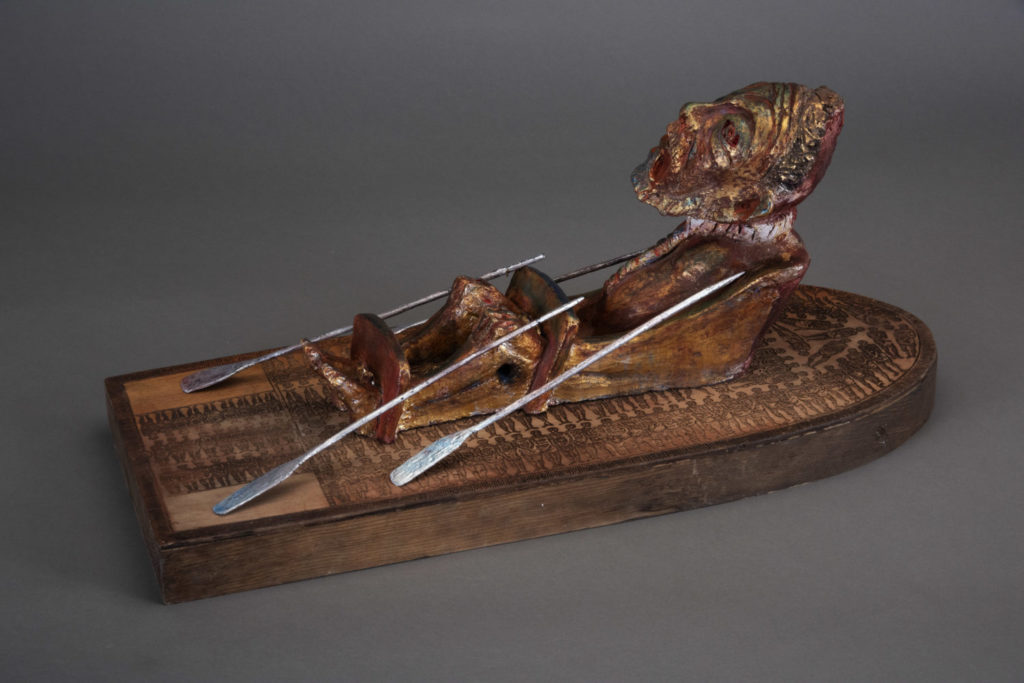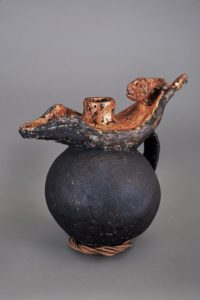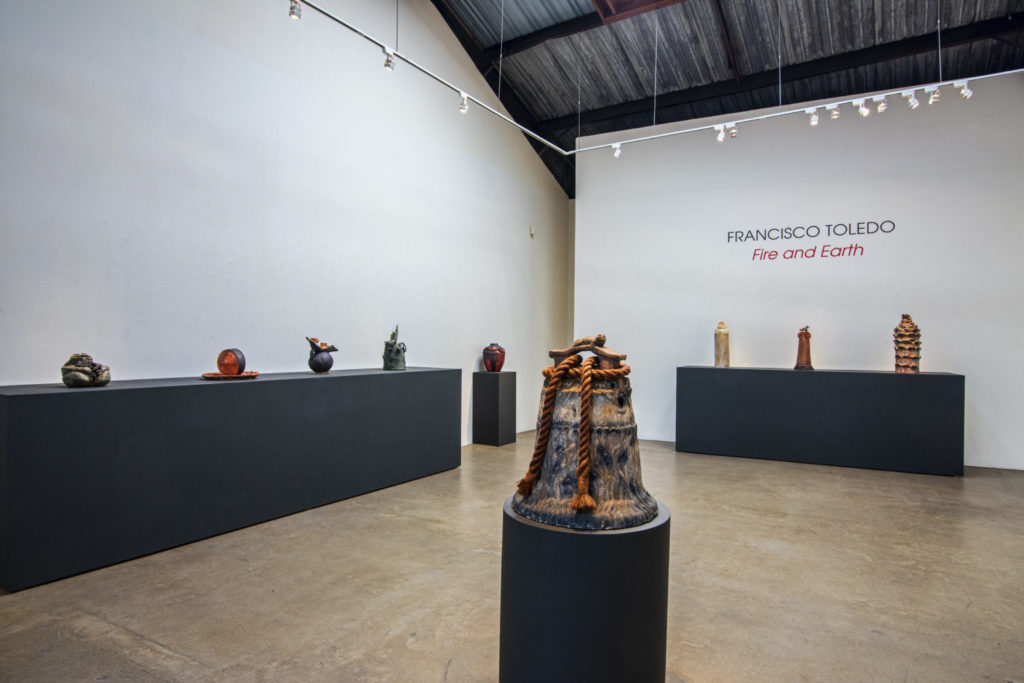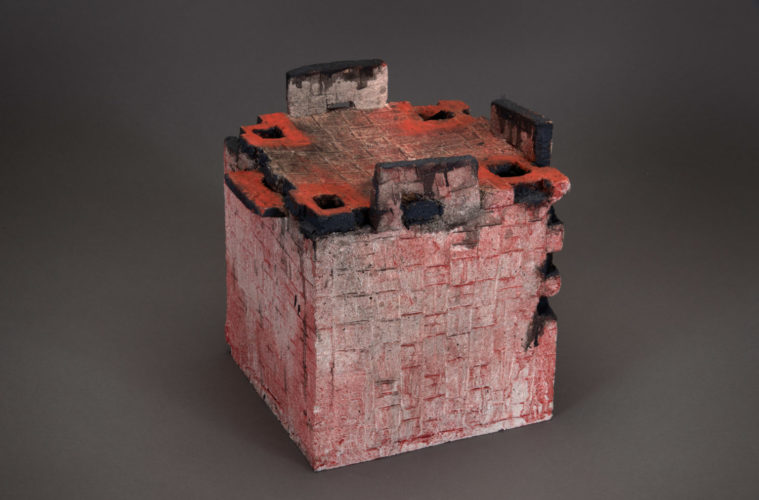Some weeks ago, I caught the Francisco Toledo exhibition, Fire and Earth, now on view at Latin American Masters — and I haven’t stopped thinking about it since.
A complete sense of life’s wonder emerges from the ceramic objects at LAM, in confluence with an intense and valedictory feeling that the artist’s “Duelo (Mourning)” works elicit. These are full of the blood-red, heart-stopping écorché and gloom that scream death: sooty and cinder-glowing urns, skeletons, and the very figure of death on the haunches of its next victim in “Death on my Back” (2015). Figures and their fragments are depicted in all manner of torment and captivity in the series, aptly displayed in a separate gallery room enshrouded in a baroque darkness. Stopping to consider each dreamed and wrought thing, I wondered how he did it, but not why. That part is emphatically clear — the joy of making, and a fire burning to tell a human story.
The exhibition comprises ceramic works of various forms. There are also bowls, totems, towers, bells and figural sculptures of animals that tell stories of life. His figures and their symbolic content often spring from the indigenous history from which Toledo’s cultural and modernist interests are born. Sometimes, they seem to spring exclusively from his imagination.
Toledo’s ceramic work is exacting; you can clearly see what he’s showing you. It’s also baffling and inventive, forcing you to stand there and imagine right alongside the artist. Beginning as a painter, Toledo ended up a ceramicist, with analogues in the modernist lyric poets, like Octavio Paz, Federico García Lorca, William Carlos Williams, and Guillaume Apollinaire. Like these artists of other forms, Toledo navigates and documents place as much as a subjective interior world — buoyant with life, unflinching about death.

Francisco Toledo at Latin American Masters (Photo by Chris Considine)
Toledo’s work considers the individual as much as the communal — with freewheeling takes on conventional forms. For example, in his “Slave Ship” (2015), a self-portrait reminiscent of a religious altarpiece but laid flat, made in high-temperature ceramic and gold leaf, silver leaf and wood. Like all of the work in this show, the material suits its subject completely. Toledo imagines himself captive to his vessel, locked down by horizontal bars, somehow saintly. The wood is transmogrified by the veneer of paint, gold and silver leaf, so that the subject’s visage takes on a gilded, mystic aspect torn from time. To me this is the most unforgettable of all the Fire and Earth works. Toledo wears his heart right there on his sleeve, empathizing with the plight of the oppressed to the extent that he assumes and reimagines himself in the role. He flips it around to show the virtue of humanity that is and will always be independent from status, wealth and the apparent but false power that brutality insists upon.

Francisco Toledo at Latin American Masters (Photo by Chris Considine)
A product of the post-war art world, Toledo wanted to take visual art further than the pictorial work that he started with. The variety and playfulness of this sculptural body of Toledo’s work, coupled with its grave and frank divulgence of mortality, is as satisfying as can be for someone with an interest in pictures. The selected works from Toledo’s “Duelo” series speak to his passion for activism. “Duelo” is a kind of memorial for the 43 students who disappeared in Guerrero, Mexico, in 2014; it’s a supplication against violence and government corruption.
Not quite knowing what medium you’re looking at is also compelling. Though rendered in traditional materials, half of these wood or ceramic objects look like they could be patinated bronze, preserved from a century ago. Toledo’s totems invoke different creatures (the snail in particular, but also the dog, the scorpion, the frog, the bat, the bird, and the elephant) and parallel the aesthetic of the ancient world.
Having returned from the show, a friend asked me what Toledo’s art is like. The first thing I thought of is its distinct humanity, and the fact that Toledo obviously loved making the work. Each object is irresistibly textured, shaped and finished, as Fire and Earth reveals Toledo’s unassailable revelry in art’s material nature — the quickest creative route to the primordial relationship between the physical and the metaphysical, the connections in humanity among the living and the dead.
The exhibition runs through February 15 at Bergamot Station. latinamericanmasters.com.

Francisco Toledo at Latin American Masters, installation view (Photo by Chris Considine)
Advertising disclosure: We may receive compensation for some of the links in our stories. Thank you for supporting LA Weekly and our advertisers.

